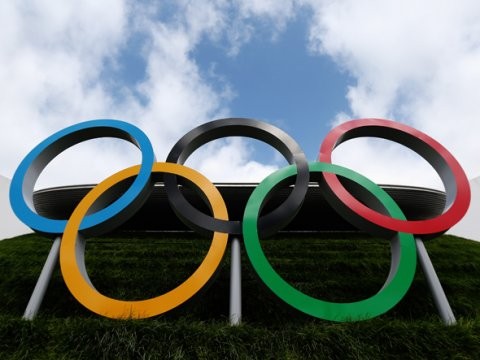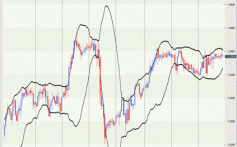The Curse Of Dow 10 000 Business Insider
Post on: 16 Март, 2015 No Comment

%img src=http://static1.businessinsider.com/
/f?id=877a6c79fc2b4049c1aa2e00 /%Now that the Dow has been above 9,000 for several months, it’s time to start wondering about whether we’ll see the return of the curse of Dow 10,000 this fall.
The idea of the “Curse of 10,000” was much talked about earlier this decade. The market seemed to have developed a pattern—whenever the Dow reached the 10,000 level it eventually ran out of steam. After the Dow first reached the 10,000 level in 1999, it reached that level 18 more times in the next four years—only to succumb to a bear market and fall below it ever time. The Wall Street Journal ran a famous story about the mysterious curse of this big, round number.
The pivotal change seems to have come in 2004, when the Dow hovered around 10,000 for the entire year. It was something of a break-through. The following year, the Dow sustained itself above 10,000 and never looked back.
A lot of short sellers and chart traders got hurt by the lifting of the curse of 10,000. They were accustomed to being able to reliably bet on a pull back whenever the market exceeded the 10,000 level—just as traders from the prior generation had profited from making similar bets against Dow 1,000 in the 1960s.
But a year ago the market crashed, bringing us back down below Dow 10,000. The market seemed bent on testing the curse once more, climbing above 9,000 midsummer and refusing to dip lower. To some the pull-back in recent weeks is an indicator that the market could turn seriously bearish if Dow 10,000 is breach again.
This kind of talk sounds odd to some rationalists. It seemingly makes no rational sense that a big round number like that should be a barrier. Under some versions of the efficient capital markets hypothesis, investor psychology should be irrelevant and prices should only reflect the relevant information about the equities being traded. The overall level of the Dow shouldn’t matter—and an arbitrarily round number of a selective index really shouldn’t matter.
But there is considerable evidence that this view of markets is too constrained. For one thing, if the markets have in the past displayed a tendency to pull back at a certain level rational investors can anticipate this and begin selling at that level. That is to say, markets adapt to what looks like investor irrationality as people seek to profit by taking advantage of it. The presence of what we might call ‘psychological arbitrageurs’—or Psych Arbs—reinforces what otherwise might be an irrational market behavior, as the traders try to make money by betting that the market will gyrate when it hits key psychological points. The bets of Psych Arbs creates downward pressure that reinforces a broader investor skepticism.
If this sounds circular, that is because it is. Speculators bet on investors psychology, and investors knowledge of this speculative behavior reinforces the psychology. Interestingly, this doesn’t really contradict the efficient capital markets hypothesis. If the price of a stock always reflects all available information about that stock, we should expect it to reflect information about the broader market as well. That is, although the health of a company hasn’t changed, the price of any stock to is not wildly uncorrelated with the Dow should decline if investors expect the broader market to falter. That is, knowledge of the level of the Dow and investor reaction to that level is efficiently priced into stock prices.
John Cassidy explained this kind of market behavior very well in his recent article on “rational irrationality” in the New Yorker :
Keynes’s jaundiced view of finance reflected his own experience as an investor and as a director of an insurance company. Every morning, in his rooms at King’s College, Cambridge, he spent about half an hour in bed studying the financial pages and various brokerage reports. He compared investing to newspaper competitions in which “the competitors have to pick out the six prettiest faces from a hundred photographs, the prize being awarded to the competitor whose choice most nearly corresponds to the average preferences of the competitors as a whole; so that each competitor has to pick, not those faces which he himself finds prettiest, but those which he thinks likeliest to catch the fancy of the other competitors, all of whom are looking at the problem from the same point of view.” If you want to win such a contest, you’d better try to select the outcome on which others will converge, whatever your personal opinion might be. “It is not a case of choosing those which, to the best of one’s judgment, are really the prettiest, nor even those which average opinion genuinely thinks the prettiest,” Keynes explained. “We have reached the third degree, where we devote our intelligences to anticipating what average opinion expects the average opinion to be. And there are some, I believe, who practice the fourth, fifth and higher degrees.”

So what happened to the curse in 2004-2005? Why didn’t this circular speculator—psych dynamic kick in once again? One answer is that the force of the bubble in financial commodities was stronger than the curse of 10,000. It was overcome through the same process that allowed so many other markets to break out above historical levels.
The more interesting answer is that experienced traders may have learned their way out of the irrational behavioral pattern. As the curse became widely known—remember that 2003 Wall Street Journal story—the opportunities for profiting from it became harder to execute. Too many investors had caught on, and the market moved too quickly. More traders began to suspect that better opportunities lay in a contrarian bet against the curse. So what we saw in 2004 was a tug-of-war between those who believed in the curse and those who were betting against it.
So what seems to have happened is that the cascading, circular behavior that had dominated from 1999 to 2003, went the other way in 2005-2008. The curse of 10,000 was lifted in 2004—much as the Curse of the Bambino was lifted that same year when the Red Sox won the World Series for the first time since 1918. Experienced traders largely stopped trying to bet on the curse in 2004, and the broader markets caught on to this.
So will the curse of Dow 10,000 return this time around? The answer might depend on which explanation you prefer for why it was broken the first time. If you believe that the financial market boom broke the curse, you might suspect that it could return now that the bubble has popped. Alternatively, if you think we’re re-inflating a financial bubble with a zero interest rate policy, fiscal stimulus, and financial bailouts, perhaps the curse will stay broken.
If you think it was diminishing returns from a crowded trade, then you might conclude that the curse has been broken. There’s been almost no talk of it in the financial media. Indeed, it seems to have been forgotten about entirely or dismissed as a mythological beast. The key ingredients of investor psychology, speculating on that psychology, and anticipating that speculation are likely missing this time around.
Then again, maybe this should be read as a contrarian signal that the market has simply forgotten how investors react to five digit Dow levels.














